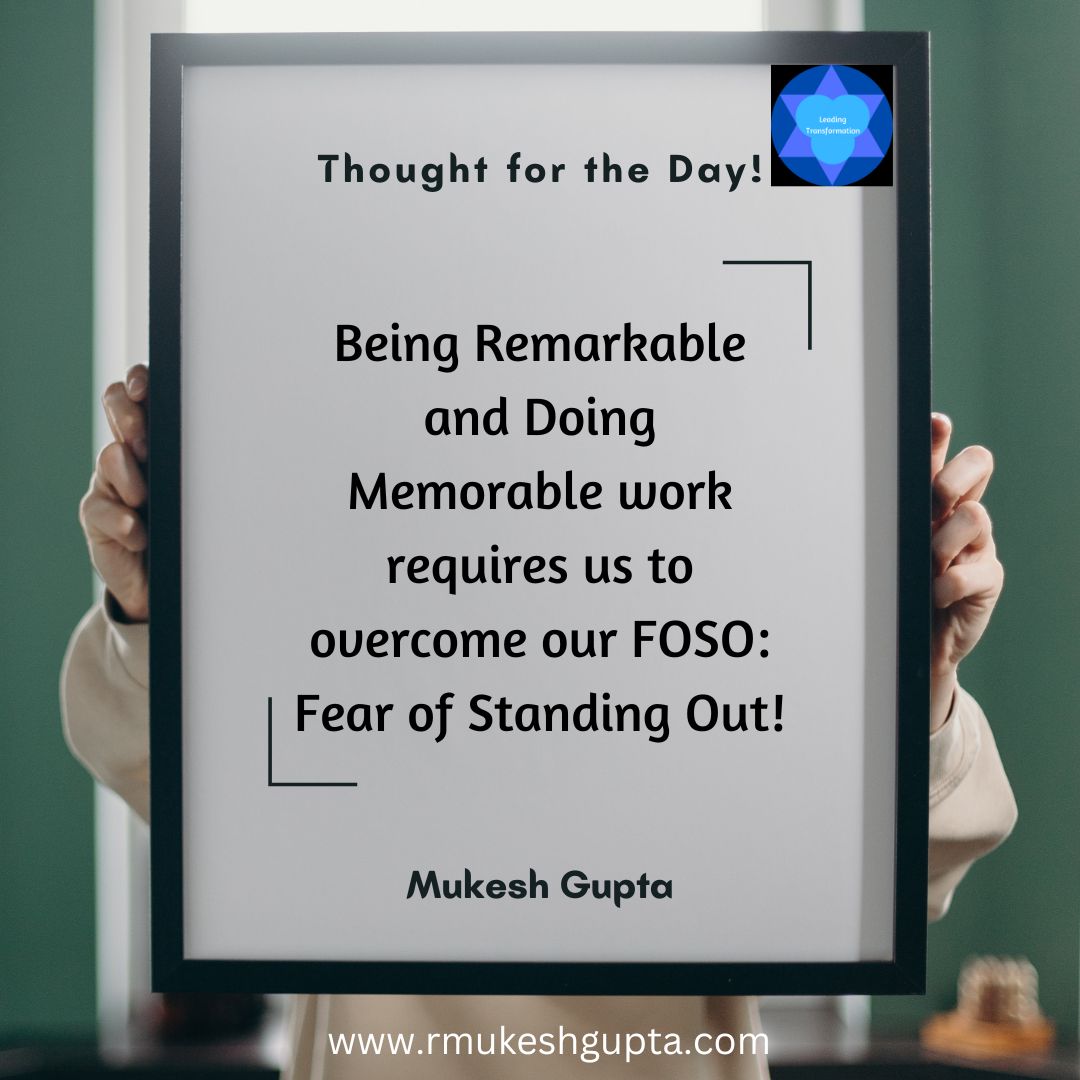In a world where it is extremely difficult to sustain any competitive advantage you build, it is important to constantly innovate and come up with new ideas, products and solutions and that too at Speed.
We all know that innovation always starts with an insight. You have an insight when you suddenly see things differently. You see things differently when you start looking at things differently. You start looking at things differently, when you are trying to answer a different question. You can trace most innovations and creative endeavours to a question that someone asked.
So, it all starts with a question.
The question that you ask is what determines the kind of answers you get.
So, if you ask bad questions, you will get bad answers, if not worse.
If you ask good questions, you might get good answers.
However, if you ask interesting questions, you get interesting answers and in my opinion, interesting answers are better than good answers.
There are different kinds of questions that you could ask:
Binaries:
These are questions which elicit a yes/no answers. These are great at clarifying a certain piece of information or thought process. Examples of these questions could be:
- Is this your book?
- Do you follow this process always?
- Do you need more information about the product/services
- Should I call you back tomorrow?
Starters:
These are questions which help you get an answer which could potentially start a discussion. Typically, these questions elicit answers that also tend to be factual. Examples of this question could be:
- What do you do for a living?
- What does this mean?
- What does this product do?
- What is the process for me to claim my expenses?
- What is our strategy?
Clarifiers:
These are questions which help you dig deeper and clarify something more or get you more information. Typically, these questions elicit answers that are sometimes factual and sometimes metaphors which would explain the reality as it is. Examples of this question could be:
- How would you solve this ?
- How would you implement this strategy?
- How would you measure this goal?
- How would you achieve your goals?
- How can I use this product/service?
- How can I claim this gift?
- Why don’t we do it this way?
- Why don’t we go after this segment of customers?
- Why don’t we do advertising? WHy don’t we use Design thinking?
Storifiers:
These are questions that help you find out the belief’s, reasons, intentions, attitudes and help understand behaviours. Typically, these are questions that elicit stories or belief’s. Examples of these questions could be:
- Why do you do this? Why this way?
- Why solve this problem?
- Why have this goal/strategy/vision, etc
- Why is this important?
- Why did you do it this way?
Probers:
These are questions that help you explore and open up possibilities and need imagination in order to be answered. These are questions that elicit creative thoughts and new ideas. Examples of these questions could be:
- What if we could combine the features of a SaaS pricing with the Higher education pricing?
- What would happen if we stopped doing these activities?
- What would happen if we started doing these activities?
- What if our marketing budgets were cut by 70% and we still have to achieve the same level of growth?
- What if our biggest competitors merged or got acquired by Microsoft?
How and when to use which questions?
If you notice, there are certain questions that create new options or increase the horizon of our conversation/thoughts and there are certain kinds of questions that help you close out options or focus in on a topic/idea.
This is how creative people work. They first use questions that helps them zoom out and create multiple ideas/options and then zoom in to focus at one or many of these options. They would then repeat the process until they have found what they were looking for.
So, you might want to start with a “conversation starter“, follow it up with a “clarifier” and then use a “storifier” to gain deep understanding. You could then “Imagineer” to introduce and explore possibilities. Once you have enough ideas/possibilities, you might use a “clarifier” to start zooming in and close out with a “binary“.
Cultivating a Designers Mindset:
This is based on a designers mindset and how designers think – they diverge and converge their thoughts and continue to do so as long as they are not satisfied with their outcome of the exercise.
So, in order to have interesting solutions or ideas, you need to be able to alternate between the kinds of questions that you ask yourself or your team.
This is a skill and like any skill, you can get better at it with practice.
So, what questions are you going to ask of yourself and your team?





One thought on “Innovation Starts with A Question”
Comments are closed.